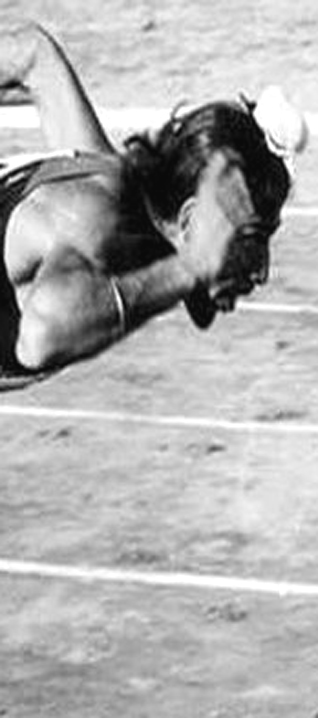Columnists
The Test of Mettle:
Janam Da Firangee,
Sikhi Main Mangee
FATEHPAL SINGH TARNEY
For many years, I have been concerned about the decreasing numbers of Sikhs in the Indian military. At the same time, I have been alarmed at the increasing drug use amongst young Sikhs in Punjab.
Moreover, I wonder how many Sikh children still contemplate careers in the military and the police as did so many of their forebears.
Of course, I also have a keen interest in young Sikh-Americans serving in the American military without compromising their Sikh principles.
I also ponder and contrast my own upbringing with that of children today and given that my heart and mind are in both East and West, I compare and contrast America with what I know about India. Allow me to give one salient example from my own teenage years in these United States.
I was about 14 years old and on my high school track team. One afternoon at a practice, the coach had us running around the school’s track as a warm-up preliminary to his usual regimen of severe calisthenics for our team.
As I was running, I began to have a nose bleed. Blood began splattering all over my t-shirt and even though I kept my head up, blood was getting into my eyes and mouth, making normal breathing quite difficult.
As I passed the coach, I asked him if I could stop running. With a look of contempt, he began hurling insults at me, questioning my masculinity as well as my ethnicity.
“You want to stop running just because of a little blood?”
He added something like, “Get around that track, you little weasel!”
In obedience, I continued running. When I got home, my mother asked me about all the blood on my t-shirt. I explained what had transpired at track practice and later, at dinner, told the story to my dad.
Dad’s reaction was the following: he was determined, the next time he saw my coach, to compliment him for making me a tougher young man and building my character!
I must confess that within five years, I was in basic training in the military and I suppose this track team experience did toughen me up for the rigors of the Marines as well as for the Vietnam War.
Let us now turn to the America of today.
I do not care whether we are talking about any other youngster or a Sikh one, were a child to come home from a sport practice with a blood-soaked t-shirt and tell his parents that the coach made him continue running despite a nose bleed, and accused him of being effeminate and insulted his ethnic origins as well, the parents would file a law suit and the coach would lose his job.
I cannot tell you what would happen in India, under similar circumstances these days. However, I have heard from older Sardars, who grew up during the British Raj, their school and sports stories comparable to my own.
February 6, 2015
Conversation about this article
1: Sunny Grewal (Abbotsford, British Columbia, Canada), February 06, 2015, 3:04 PM.
I think its great that the amount of Sikhs in the Indian military is decreasing. When the Indians lose the next war, they will know why.
2: AD Singh (India), February 07, 2015, 3:36 AM.
Post 1984, Sikhs have an uneasy relationship with India. Prior to 1984, a career in the military was the first choice for many rural Sikhs but the Genocide of 1984 changed all that. Also, the Indian government too has moved towards active discouragement of Sikhs in the military.
3: Kaala Singh (Punjab), February 08, 2015, 1:00 AM.
There will be a time when Sikhs will have their own country and their own army and yes, there will be no dearth of people willing to serve!
4: Kaala Singh (Punjab), February 08, 2015, 2:54 AM.
@2: The times have changed. India might have moved towards discouraging Sikhs to serve in their military now, that is their loss and our gain, our blood will not be spilled for such ungrateful people. But right after, and since getting independence from Britain, India actually begged for Sikh help. The British Indian Army was bifurcated between India and Pakistan. The regiments India got had no skills and experience in mountain warfare. It was the Sikh military units and the armies of the Sikh Princely States of Patiala and others that helped save whatever India has today of Kashmir, to take but one example. Not so long ago, it was Bana Singh belonging to a clan of Sikhs native of the hilly areas of Jammu, who singlehandedly captured the highest peak in the Siachen glacier located at an altitude of 21000 ft, from Pakistan after a near vertical climb of more than 500 metres from the base in temperatures lower that -50 degrees C! A feat that remains unparalleled in the history of high-altitude warfare. The role of Sikh regiments in the India-China conflict of 1962 is another story for another day.



